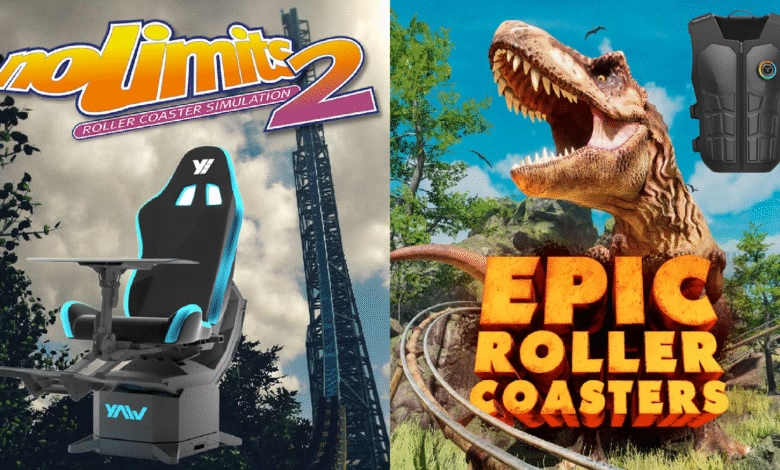Experience Thrilling Roller Coasters at Home with Motion Simulators

▼ Summary
– VR technology, including motion rigs and haptic gear, now allows roller coaster enthusiasts to experience realistic rides at home.
– The high cost of amusement park trips makes VR a more affordable alternative for families seeking coaster thrills.
– Epic Roller Coasters and No Limits 2 are standout VR games that deliver immersive coaster experiences with motion and haptic feedback.
– No Limits 2 offers hyper-realistic recreations of real-world coasters, appealing to enthusiasts and professional designers alike.
– A full home VR coaster setup can cost around $6000, but location-based VR arcades provide accessible alternatives for experiencing the technology.
For thrill-seekers craving the adrenaline rush of roller coasters without leaving home, motion simulators paired with VR technology now deliver an astonishingly realistic experience. What once required expensive park tickets and travel can now be enjoyed through immersive setups that replicate every heart-pounding drop and twist.
As a lifelong roller coaster fanatic, I remember the mix of terror and excitement when I first conquered the Texas Cyclone at Astroworld. That single ride sparked an obsession that led me to seek out bigger, faster coasters wherever I traveled. But with a family of five, the costs of amusement park trips, tickets, hotels, meals, quickly add up, making frequent visits impractical.
Virtual reality has long promised to bring these thrills home, but early attempts often fell short. Early VR coaster demos lacked the physical sensations that make real rides so exhilarating. That changed with advancements in motion simulation and haptic feedback technology. Recently, I tested a Yaw 3 motion simulator combined with a bHaptics suit, transforming my living room into a high-speed amusement park.
Two standout VR experiences proved particularly impressive: Epic Roller Coasters and No Limits 2. The former, available on standalone Quest headsets, offers a mix of traditional rides, shooter challenges, and multiplayer races. With built-in support for motion rigs and haptic vests, the game delivers an intense sense of speed and movement. The first time I tried it with the Yaw 3, the difference was staggering, every climb, drop, and sharp turn felt unnervingly real.
For purists who crave authenticity, No Limits 2 stands out. This PC-based simulator meticulously recreates real-world coasters, complete with physics that mirror their actual counterparts. The community-driven platform also lets users design and share custom tracks, some pushing engineering limits beyond what real parks dare attempt. Testing the infamous Crystal Beach Cyclone, a notoriously brutal wooden coaster, on the motion rig was a white-knuckle experience that left me breathless.
Of course, this level of immersion comes at a price. A full setup, high-end VR headset, motion simulator, and haptic gear, can easily exceed $6,000. For those unwilling or unable to invest, location-based VR arcades increasingly offer similar experiences at a fraction of the cost.
Whether at home or in an arcade, motion-enhanced VR roller coasters redefine what’s possible in digital entertainment. The combination of visual immersion, physical movement, and tactile feedback creates an experience that’s thrillingly close to the real thing, minus the long lines and sunburn. For coaster lovers, it’s a game-changer.
(Source: Upload VR)
